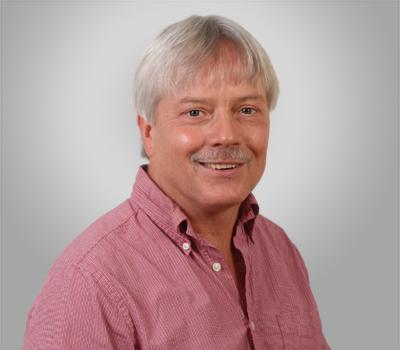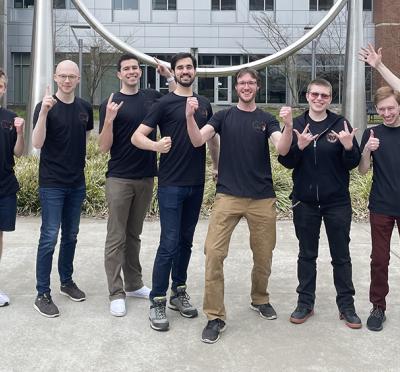
You might expect a college kid from California would not appreciate the small town of Corvallis. But it wasn’t so for John Wager who came here to get his undergraduate degree in engineering physics. An avid runner, bicyclist and hiker, Wager loved it here — it’s also where he met his wife — so Wager knew they would want to come back if they got the chance.
Although in high school he had vowed to never become an electrical engineer (figuring they were the nerdiest of all engineers) — solar cell technology captured his attention and he dismissed his stereotype to study photovoltaics at Colorado State University where he got his Ph.D.
“Solar energy is really hard and I liked the challenge and the fundamental thinking it requires, but also from a philosophical point of view it’s much better to generate your energy with renewable sources,” he says.
After working at the Hughes Research Laboratories in Malibu for a couple years Wager got his wish to return to Corvallis.
“My first choice was always Oregon State, I interviewed at only OSU and if I didn’t get the job I didn't know what I was going to do. This is where I wanted to come to teach and research,” he says. It was where he wanted to raise his two daughters, and he felt that professionally there were a lot of great things happening here.
His career shifted a bit though as he moved away from solar technologies and focused on solid state materials and devices where he has made a huge impact with his colleagues in the departments of chemistry, physics and chemical engineering.
Their technological advances border on science fiction — such as transparent transistors that are now being used to develop transparent display monitors. Also, much of their work uses “amorphous metals” which have unique physical properties that Wager hopes will allow them to make improvements in metal insulators, integrated circuits, transistors, and possibly a new way to harvest energy.
A main focus of his work is finding materials that are less toxic to the environment and are more efficient in terms of using energy. To this end, he is a co-investigator for the Center for Sustainable Chemistry that was recently awarded $20 million in funding from the National Science Foundation.
“I really like the intellectual aspect of my job — being creative and problem-solving — we’re pretty lucky that we get a chance to do that as often as we do,” Wager says. “And I also love teaching, which can be humbling at times when you realize you don’t know something as well as you thought you did! But it’s challenging and fun.”
Wager’s active research group includes many graduate students and advanced undergraduates. “I like independent, highly motivated students. Then I give them something I can’t figure out and cut them loose and let them do it!” he says.
And through the years spent here, Wager also had time to enjoy the area he first fell in love with — taking camping trips throughout the Pacific Northwest with his family. Now they like traveling farther afield and he especially enjoyed a brief sabbatical at Cambridge where he took his grown daughters. They took short trips throughout Europe including a visit to the Heineken Brewery. He laughs as he recalls his youngest daughter with her first beer. “I don’t think she liked it, but she suffered through it and we got the picture!”
On the horizon for him is a return to the area that first got him interested in electrical engineering and one of the hottest current topics — solar energy, specifically advancing thin-film solar absorbers. Ironically, although he was once concerned that electrical engineering was not cool enough Wager has spent his career on leading edge of technology.
—By Rachel Robertson




